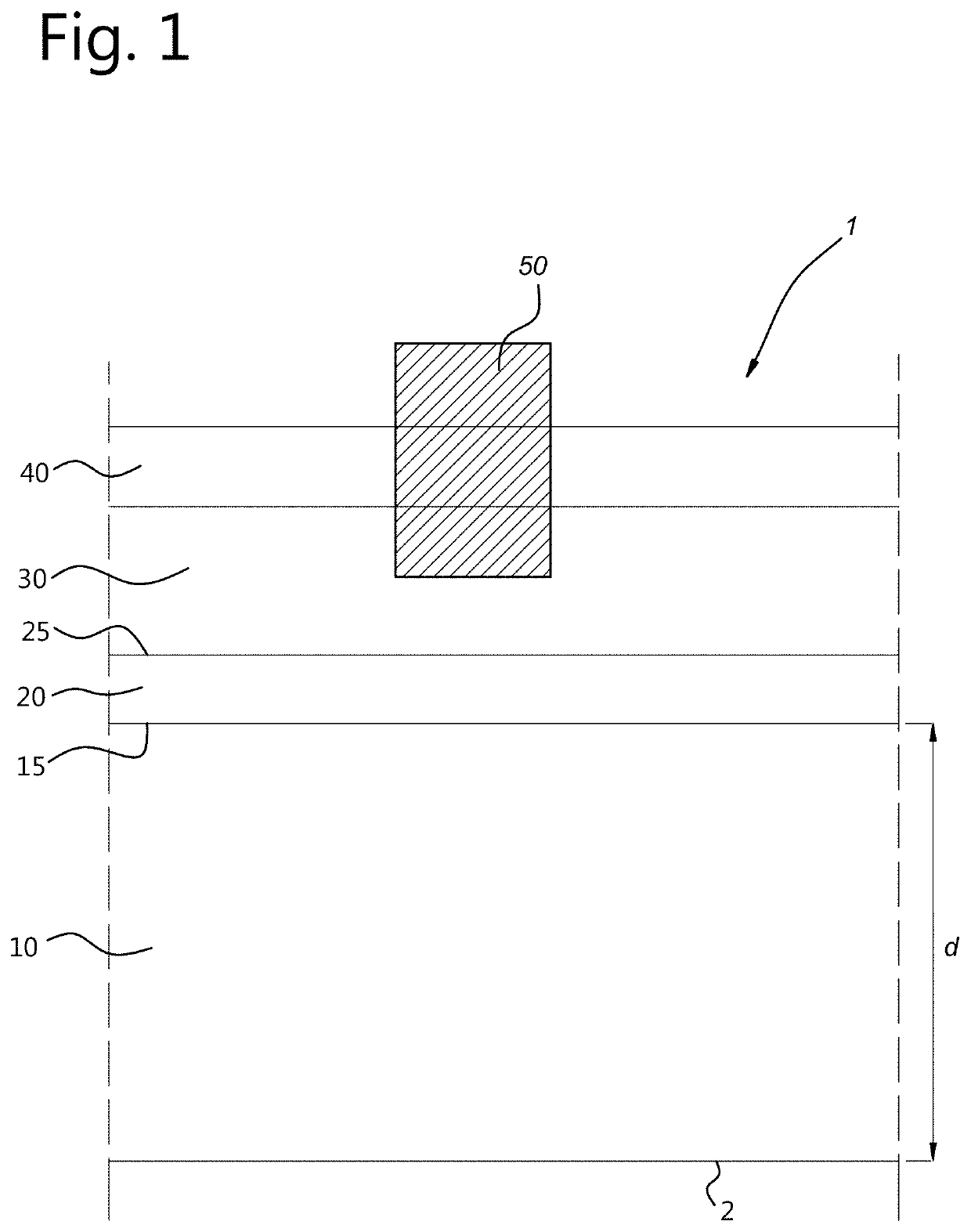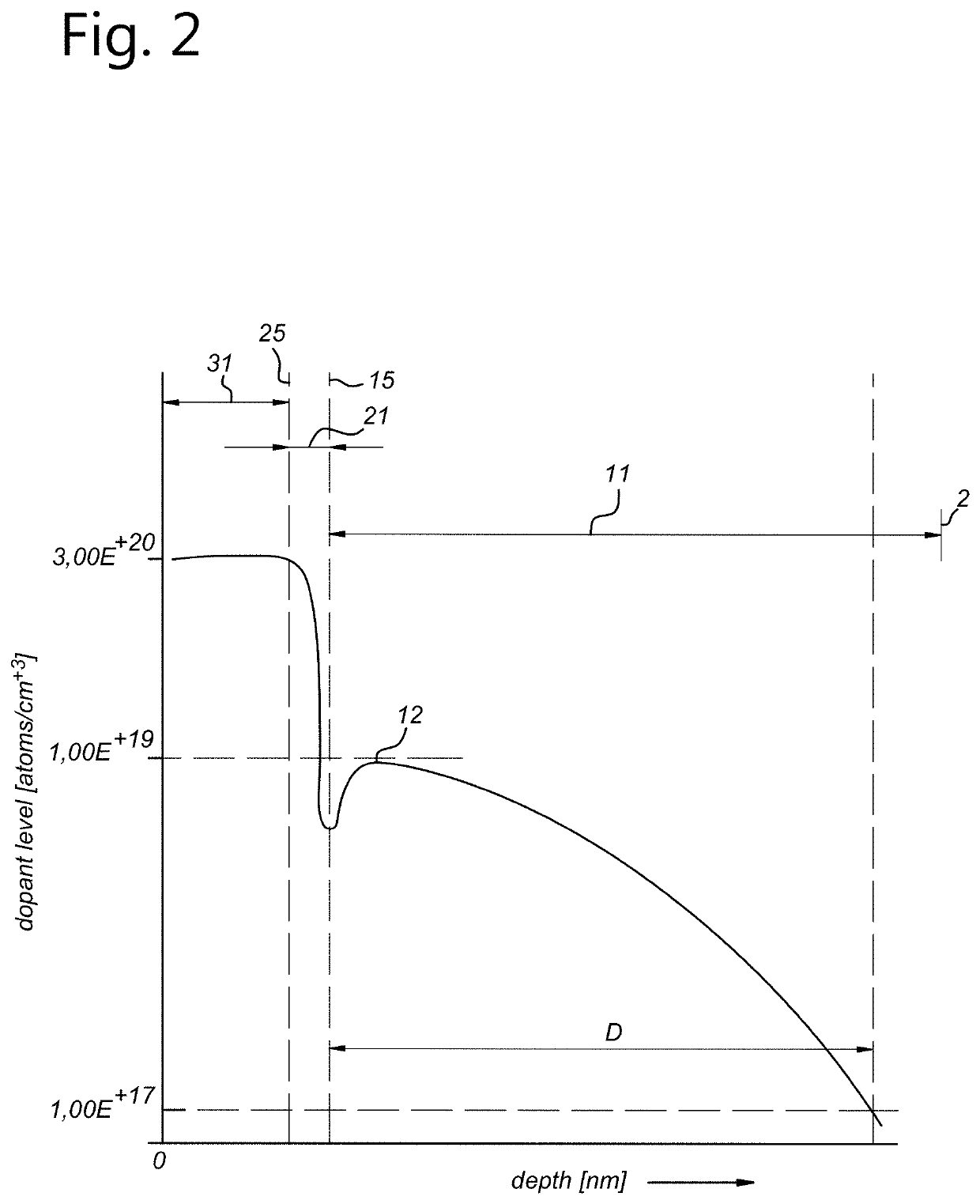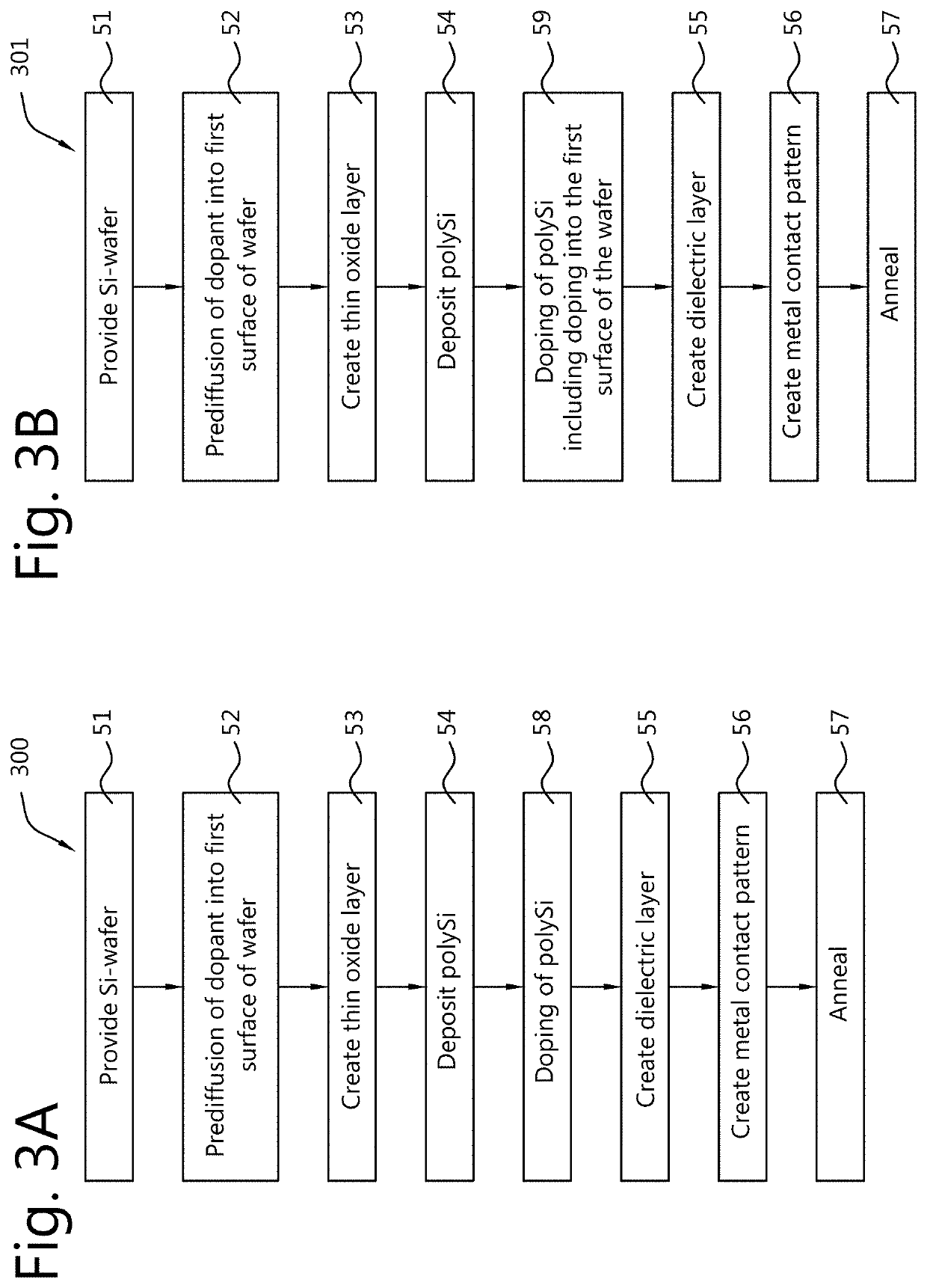Dopant enhanced solar cell and method of manufacturing thereof
a solar cell and dopant technology, applied in the direction of sustainable manufacturing/processing, climate sustainability, semiconductor devices, etc., can solve the problems of positive affecting the efficiency of the solar cell, achieve the effect of limiting recombination, improving compatibility, and reducing costs
- Summary
- Abstract
- Description
- Claims
- Application Information
AI Technical Summary
Benefits of technology
Problems solved by technology
Method used
Image
Examples
Embodiment Construction
[0019]FIG. 1 depicts a cross-section of a polysilicon passivated solar cell with a metal contact. The solar cell layer stack 1 comprises a silicon substrate 10, a tunnel oxide layer 20, a polysilicon layer 30, an dielectric coating layer 40 and a metal contact 50.
The silicon substrate 10 has a front surface 2, intended for facing the Sun when in use, and a rear surface onto which a tunnel oxide layer 20 has been created. A thin oxide is commonly used as tunnel oxide material. The layer has a minimum thickness of about 1 nm, 3 atomic layers, and is maximised at around 5 nm. The silicon substrate is a doped silicon wafer, which has been doped in a pre-diffusion step and / or during doping of polySi resulting in the claimed dopant profile which is discussed with reference to FIGS. 2 and 3. The thin oxide layer may be a silicon oxide or metal oxide and may contain other additional elements such as nitrogen. The thin oxide layer may in actual effect not be a perfect tunnel barrier, as it c...
PUM
| Property | Measurement | Unit |
|---|---|---|
| depth | aaaaa | aaaaa |
| depth | aaaaa | aaaaa |
| thickness | aaaaa | aaaaa |
Abstract
Description
Claims
Application Information
 Login to View More
Login to View More - R&D
- Intellectual Property
- Life Sciences
- Materials
- Tech Scout
- Unparalleled Data Quality
- Higher Quality Content
- 60% Fewer Hallucinations
Browse by: Latest US Patents, China's latest patents, Technical Efficacy Thesaurus, Application Domain, Technology Topic, Popular Technical Reports.
© 2025 PatSnap. All rights reserved.Legal|Privacy policy|Modern Slavery Act Transparency Statement|Sitemap|About US| Contact US: help@patsnap.com



